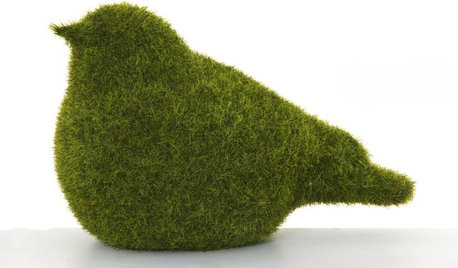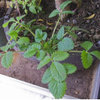grassy looking weed
nigel1965
14 years ago
Related Stories

GARDENING GUIDESTackle Weeds the Natural Way
Instead of dousing your yard with chemicals to wipe out weeds, let time and nature work their magic via smothering and solarization
Full Story
PRODUCT PICKSGuest Picks: Get With Grassy Accents for the Home
Green it up in every room with grass-inspired prints, materials, accessories and even a charging station
Full Story
HOUZZ TOURSHouzz Tour: From Overgrown Weeds to Picturesque Farmhouse Expanse
This once-neglected 100-acre South Carolina site now features a lake, a wood-filled farmhouse and a far-reaching view
Full Story
EDIBLE GARDENSNatural Ways to Get Rid of Weeds in Your Garden
Use these techniques to help prevent the spread of weeds and to learn about your soil
Full Story
GARDENING GUIDESWhat’s in a Name? See 6 Wildflowers That Aren’t ‘Weeds’ at All
Dispel the stereotypes of weeds and try these wildlife-supporting native wildflowers in your garden
Full Story
GARDENING GUIDES5 Ways to Naturally Win the Weed War
Show irksome weeds no mercy with these tricks for combating them sans chemicals
Full Story
GARDENING GUIDES5 Weed-Smothering Ground Covers
Let these landscape plants do the dirty work of choking out weeds while you sit back and enjoy the view
Full Story
GARDENING GUIDESWeed War: When and How to Use Chemical Herbicides
Before you spray, arm yourself with knowledge about which weed killers — natural or synthetic — are right for your yard
Full Story
GARDENING GUIDESGreat Design Plant: Bugle Weed, a Quick Ground Cover
It’s highly adaptable, suppresses weeds, reduces erosion and provide weeks of bright flowers. Just watch for invasiveness
Full Story
GARDENING GUIDESLet's Weed Out 4 Native Plant Myths
Plant wisely for a garden that supports pollinators and requires less work
Full StoryMore Discussions








Kimmsr
Beeone
Related Professionals
Ashland Landscape Architects & Landscape Designers · Havre de Grace Landscape Architects & Landscape Designers · Salisbury Landscape Architects & Landscape Designers · Towson Landscape Architects & Landscape Designers · Willowick Landscape Architects & Landscape Designers · Bell Gardens Landscape Contractors · Brockton Landscape Contractors · Englewood Landscape Contractors · Fort Atkinson Landscape Contractors · Hilton Head Island Landscape Contractors · Post Falls Landscape Contractors · Roswell Landscape Contractors · Seymour Landscape Contractors · 07920 Landscape Contractors · East Norriton Landscape Contractorsnigel1965Original Author
Beeone